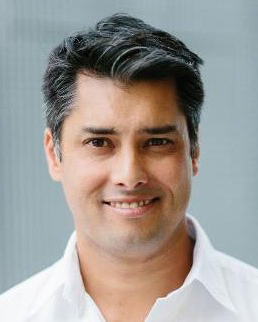
Interview with Jonathan Israelsson, CEO of Lissly, a social media monitoring company in Sweden
Hi Jonathan, what is your background and what is included in your current role at Lissly?
During the course of my education, I always felt ambivalent between a career in sports and a more traditional path. While I wrote my master thesis in marketing and communication at Stockholm University, I also worked as a soccer coach for teams ranging from youth groups to the premier league for female players. After a couple of years, I realized that I found it more fulfilling to work in the communication and events field. I was responsible for a meeting facility before joining Lissly, but the choice was easy because I could clearly identify another level of customer value.
In my role as partner and CEO at Lissly, my main responsibility is to motivate and support our six employees in succeeding and reaching their full potential. I also engage in customer care, and I regularly attend meetings with our existing customer base. All members of the Lissly team are involved in sales, which means some of my time is devoted to coordination and support.
What differs Lissly from other media monitoring and social intelligence companies in Scandinavia?
That is a difficult question! When meeting with customers and industry colleagues, it seems apparent that all players have the same type of monitoring sources, which makes the competition fierce. Lissly has chosen to focus on the Nordic market, specifically Sweden and Norway. We consider ourselves a strong brand because we understand how social media works in Sweden. We always strive to provide statistics as a basis for our offerings, and a lot of variables in social media mentions allow us to generate interesting insights using a mix of statistical frameworks and a slight touch of finesse. We always try to adapt to the new demands and changing landscape of the market, which means implementing new channels in our analysis and comparing with existing customer data to maximize the customer’s value.
Which type of companies benefit from your services?
Lissly has a wide range of customers, but we are particularly strong with the Swedish trade unions and employers’ associations. A growing number of them use our analysis to create opinion and measure the effects of their campaigns. Furthermore, we have experience working with customers from all markets, from local daycare for dogs to the largest agencies in Sweden.
You have recently moved more into analysis than just being a media-monitoring platform. Why is that?
Our customers demanded more information and insights than any tool can provide with automated methods. Therefore, we began to develop our analysis offering together with our key customers to provide answers to what they really need to know from their endeavors in social media. We also invented new types of KPIs, which simply were not possible in the platform environment. The feedback from our customers was overwhelmingly positive, and now we are proud to deliver the greatest possible customer value based on the information available in social media.
Can you give specific examples where one or more of your clients have made changes in their communication, organization or similar, based on the information or analysis you provided?
We created an analysis for one of Sweden’s largest coffee producers, and one of the key insights was the identified behaviors of the different demographics. For example, females between the ages of 25 to 45 were prone to share, late at night between 9 and 10PM, what they are baking for the coffee break the next day. This meant that the coffee producer could adjust the marketing and commercials accordingly.
What are your greatest challenges ahead at Lissly, when it comes to serving your customers analysis and develop your offer?
The main challenge is rebranding and creating awareness of our new focus on manual analysis. We are working on communicating these changes and the fact that “Lissly 2.0” is not an update of our tool but rather our core business model. This process is going well, but there are always some potential customers who should realize this sooner rather than later.
All clients have different levels of understanding how social media can be analyzed. Which is the most common misconception that your clients have?
That it’s possible to monitor everything by yourself. It’s possible to get a basic understanding of the situation, but do you really have the time and energy to read everything and understand what the aggregate means? When Lissly applies its expertise and KPIs, it really provides a level of understanding, which is impossible to attain with the traditional tools on the market.
Which social platform do you see has the most potential in the future?
I believe everything related to picture and video will grow. It would be amazing to get access to Snapchat data and analyze the behaviors of one of the largest social media platforms.
Are there any social platforms that are closed today that you would be interested in tapping into for monitoring that would benefit your customers?
There has always been a great demand to monitor the activity on LinkedIn, especially for the B2B customers, which are particularly interested in potential leads and decision makers. This has been impossible with the automated methods available for the monitoring tools, but we have come up with a way to incorporate LinkedIn data in our analysis offering.
What kind of data or media that you do not have monitoring on today, can be interesting in the future?
If I could pick a source to compare to our existing data, it would be Snapchat. The insights would be really interesting for certain markets. We have begun to test the possibilities, but unfortunately only the data from your own account is available, which greatly limits the potential. We are eagerly waiting for the official API, and if it provides a way to collect data, Lissly will be the first in line to implement it in our analysis.
How do you think the media monitoring and social intelligence industry will change in the next five years?
My intuition tells me that everything will be focused on insights. The main focus will be to use all available information to identify the optimal market conditions and key individuals to generate more business. Today, the market is focused on what is being said, but it will shift to what it really means.
By Renata Ilitsky


